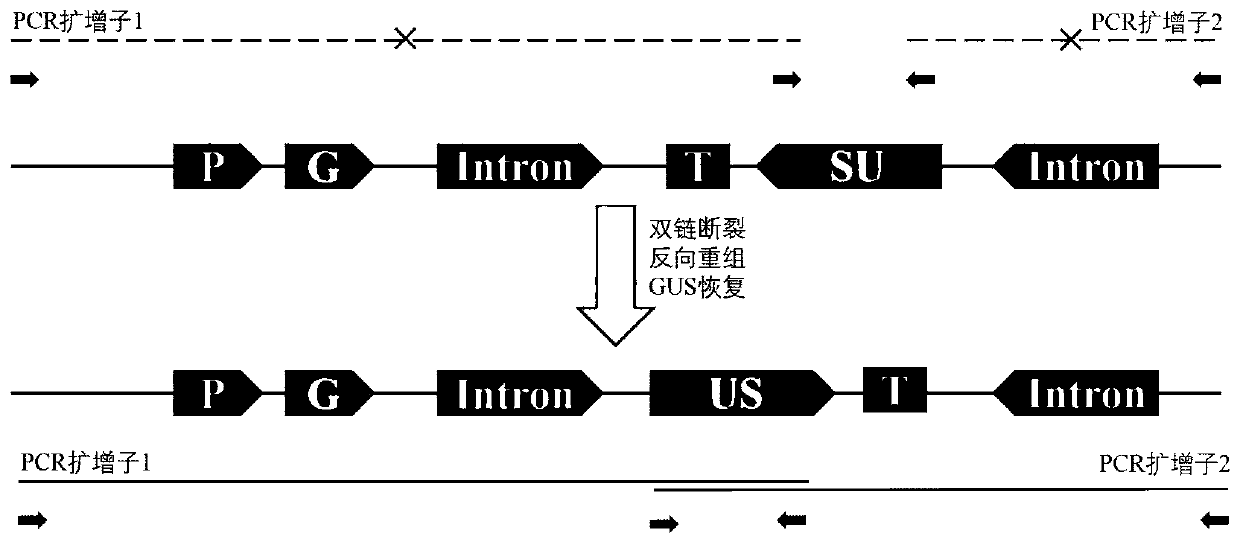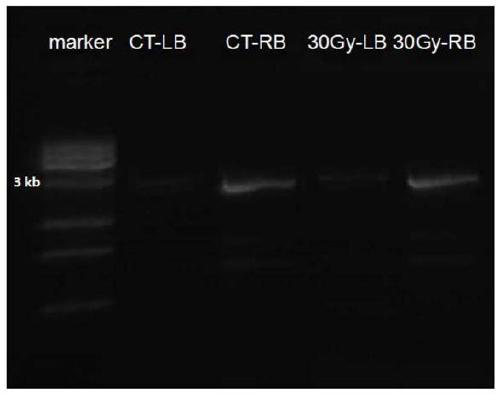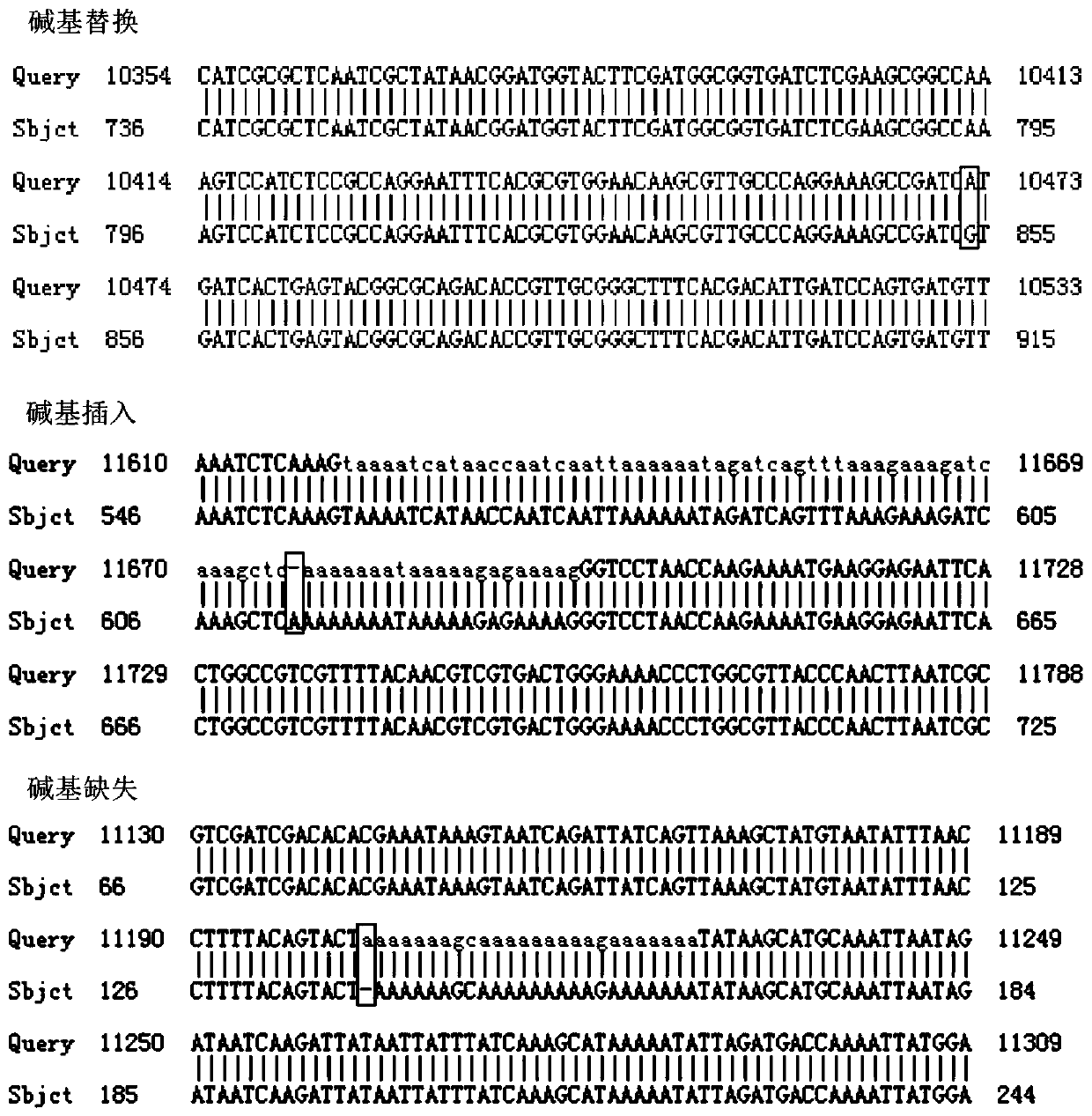Efficient marking method for heavy ion radiation mouseearcress genome target spots
A technology of heavy ion irradiation and Arabidopsis thaliana, which is applied in the field of efficient labeling of Arabidopsis genome targets by heavy ion irradiation, can solve the problems of cumbersome experimental process, low labeling efficiency, and complexity, and achieve simple experimental operation and high labeling efficiency Effect
- Summary
- Abstract
- Description
- Claims
- Application Information
AI Technical Summary
Problems solved by technology
Method used
Image
Examples
Embodiment 1
[0037] High-efficiency labeling method for genomic targets in Arabidopsis thaliana irradiated by heavy ions
[0038] (1) Experimental materials: seeds of the Arabidopsis homologous recombination reporter gene line irradiated with 30Gy of heavy ions;
[0039] The Arabidopsis homologous recombination reporter line R3L66 introduces completely homologous and inverted repeat intron fragments into the reporter gene GUS to form a substrate sequence for homologous recombination to inactivate the reporter gene, and the recombination substrate sequence of the reporter gene After genetic damage, restore the activity of the reporter gene through homologous recombination repair, the specific principle is as follows figure 1 shown;
[0040] The size of the intron fragment is 589bp, and the sequence of the intron is shown in SEQ NO.1.
[0041] (2) Experimental steps:
[0042] (1) The irradiated seeds were sown in MS medium after 2 days of vernalization, the MS medium contained 1% sucrose,...
PUM
 Login to View More
Login to View More Abstract
Description
Claims
Application Information
 Login to View More
Login to View More - R&D
- Intellectual Property
- Life Sciences
- Materials
- Tech Scout
- Unparalleled Data Quality
- Higher Quality Content
- 60% Fewer Hallucinations
Browse by: Latest US Patents, China's latest patents, Technical Efficacy Thesaurus, Application Domain, Technology Topic, Popular Technical Reports.
© 2025 PatSnap. All rights reserved.Legal|Privacy policy|Modern Slavery Act Transparency Statement|Sitemap|About US| Contact US: help@patsnap.com



